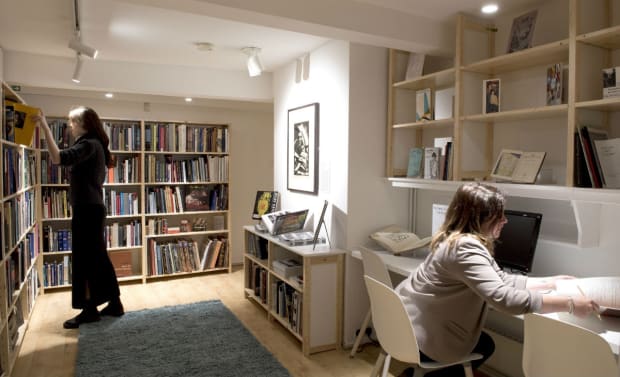-
our core purpose is to research and digitally record the wide refugee and IMMIGRAnt contribution to british visual culture since 1900.
our Digital and physical programming evolve from our research unit, our collection, and our immigrant heritage. it is designed to educate, entertain and inspire further research.
Our Philosophy is to surpass ethnic, cultural and religious obstacles to engagementwithin the arts sector, addresses contemporary and historical issues of identity and migration, by presenting and sharing art differently, we have encouraged you to explore your own and your community identity and creativity.
-
Announcing the Ben Uri Research and Dissemination Institute, January 2026
-

-

-

-
HISTORY
Ben Uri was founded by Lazar Berson, an émigré Russian artist, in 1915 in Whitechapel in London.
It originally was an art venue for Jewish immigrant artists who were unable to gain access to mainstream art societies at that time, due to the social discrimination and obstacles faced by migrant communities. A registered charity as well as a museum, Ben Uri was the cornerstone of the Jewish community’s cultural activity until the late 1970s. Ben Uri Art Society, as it was then, lost its gallery in 1995 when the synagogue building, in which it was housed, was sold.
A new Board of Trustees was elected in October 2000, led by current Executive Chair, David Glasser, to deliver a radical strategy to reshape and reposition the institution. The charity/museum was relaunched in 2001 by the new Board, with a new name, Ben Uri Gallery and Museum. It rented its current gallery in St. John’s Wood in June 2002. It was seen as a ‘start up’ museum, piloting its way into the centre of Britain’s mainstream arena.
Since 2001, Ben Uri has curated some 100 exhibitions, toured to 30 different cities across 3 continents, published over 50 books and catalogues which have been distributed nationally and internationally. Ben Uri has produced over 200 short films. Its scholarship on Jewish and immigrant artists is recognised internationally. Ben Uri has also pioneered a new approach to using art differently through its Arts and Dementia programming within its Mental Health programme. Working with universities, the content and structure are the result of research and evaluation. The objective is to upscale and establish a new national standard for art interventions.
-
Ben Uri's new AI inclusive disclaimer:"All content of the Ben Uri Research Unit is designed for non-commercial, educational and critique user purposes and shall not be used in any form for the purpose of training artificial intelligence or machine learning technology. In accordance with Article 4(3) of the DSM Directive 2019/790, Ben Uri expressly reserves all content from the text and data mining exception."
Be the first to know – Sign Up
Subscribe to our newsletter and be the first to know about everything new at Ben Uri, including the constantly evolving and expansive online content across our exhibitions, collection and research.
We value and respect your privacy. Your personal data will be kept private and processed securely, according to our Privacy Policy. If you change your mind anytime, you can unsubscribe directly when receiving a mail from us (the link will be at the bottom of the email) or contact us.
* denotes required fields
This website uses cookies to improve your experience. If you are not happy with this, you can opt-out below.




